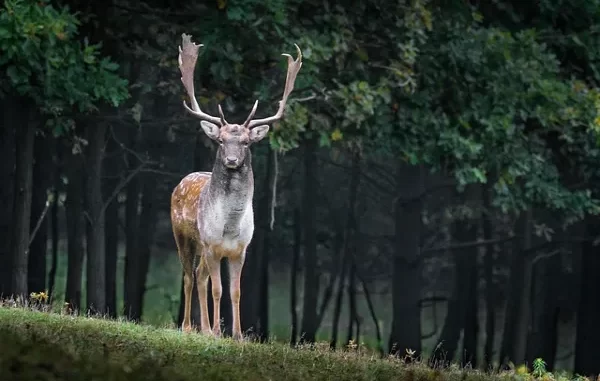
Insights into the Fascinating World of Animal Behavior
Animal behavior is a captivating field of study that allows us to gain insights into the fascinating world of animal communication. From the complex dances of birds to the complicated social systems of primates, animals have developed a wide range of behaviors to live in and thrive in their environments.
What is Animal Behavior?
Animal behavior is the umbrella term encompassing everything an animal does in response to its world. This includes both internal and external factors. An animal might twitch its ears in response to a sudden noise (external), or initiate a complex hunting routine driven by hunger (internal).
Scientists dissect behavior by considering its cause, development, and purpose. Some behaviors are instinctive, like a newborn calf nuzzling its mother. Others are learned, like a chimpanzee using a stick to fish for termites. Often, behaviors combine both innate and learned aspects.
Ultimately, the behaviors animals exhibit are shaped by natural selection. Those that promote survival and reproduction – like escaping predators or finding food – become ingrained through evolution. By studying animal behavior, we gain a deeper understanding of how animals interact with their environment and each other, providing valuable insights into the natural world.
Are Animals Self-aware?
The question of animal self-awareness remains a complex and debated topic. While we can’t definitively know what goes on in an animal’s mind, scientists look for clues in behavior. One common test is the mirror test, where animals are presented with their reflection.
Chimpanzees, elephants, and some dolphins have shown signs of recognizing themselves, suggesting a level of self-awareness. However, the test has limitations, and other explanations exist, like mistaking the reflection for another animal. Additionally, self-awareness might come in various forms.
Understanding internal states like emotions might be a different level of self-awareness than simply recognizing oneself physically. While some animals exhibit behaviors suggesting a sense of self, further research is needed to fully understand the spectrum and nature of self-awareness in the animal kingdom.
Animal Communication
One of the important components of animal behavior is communication. Animals use numerous alerts, which include vocalizations, body language, and chemical cues, to convey facts to others in their species. For instance, the melodious songs of birds now not only function as a way of attracting friends but also set up territory barriers.

Similarly, bees carry out intricate dances to speak about food resources to their fellow hive members. These dances deliver valuable information consisting of distance, course, and excellent food, permitting the whole hive to correctly acquire resources.
Social Behavior in Animals
Animals additionally exhibit an extensive range of social behaviors, from solitary hunters to extraordinarily prepared societies. Wolves, for instance, stay in packs in which each member has a particular function and contributes to the survival of the group. They communicate through vocalizations, body postures, and heady scent marking, reinforcing social bonds and keeping order inside the pack.
Primates, on the other hand, have complex social structures that involve intricate hierarchies and alliances. Chimpanzees, our closest spouses and children, engage in grooming behaviors to bolster social bonds and clear up conflicts. They also use vocalizations, facial expressions, and gestures to speak with one another.
Mating and Reproduction

Mating and reproduction are essential elements of animal behavior. Many species have evolved difficult courtship rituals to attract mates and ensure successful reproduction. Peacocks, with their vibrant and lavish plumage, have interaction in elaborate shows to affect women.
Other animals, such as penguins, have interaction in lifelong monogamous relationships and work collectively to raise their offspring. The bond between penguin couples is so strong that they even take turns incubating their eggs and worrying for their chicks.
Migration of Animals
Migration is any other captivating conduct found in lots of animal species. Birds, as an example, undertake lengthy and threatening journeys throughout continents, guided by innate navigational abilities and environmental cues. They use landmarks, magnetic fields, and celestial cues to find their way.
Sea turtles additionally exhibit superb navigation talents, returning to the exact seashore where they were born to lay their eggs. It is assumed that they use the Earth’s magnetic field and the perspective of the sun to navigate across great distances in the ocean.

Animal behavior is an enormous and diverse subject that continues to amaze and intrigue scientists and nature enthusiasts alike. By researching animal behavior, we gain a deeper understanding of the complicated and interconnected web of life on our planet. From communication to social behavior, mating and duplication, migration, and navigation, animals have advanced exceptional strategies to conform to and survive in their respective habitats. Exploring the wonders of animal behavior allows us to understand the awesome range and beauty of the natural world.
Examples of Animal Behaviors
The animal kingdom overflows with fascinating examples of behavior. From the elaborate courtship rituals of birds-of-paradise with their dazzling displays of feathers and dances, to the complex communication methods of honeybees using waggle dances to guide others to food sources, these behaviors all serve a vital purpose.
Consider the impressive migrations of monarch butterflies, spanning thousands of miles over multiple generations, a feat guided by an internal compass and learned from previous generations. Even the seemingly simple act of a spider spinning a web is a complex behavior, combining instinctual knowledge with learned techniques honed through practice. These are just a few glimpses into the incredible diversity and ingenuity of animal behavior in the natural world.
The Importance of Animal Behavior
Understanding animal behavior isn’t just about appreciating fascinating quirks in the natural world. It holds immense significance for both conservation efforts and scientific progress. By deciphering how animals interact with their environment and each other, we gain crucial insights into their needs, threats, and overall well-being.
This knowledge informs conservation strategies for protecting endangered species. For example, studying bird migration patterns helps us identify critical stopover habitats that need conservation. Additionally, understanding animal behavior allows scientists to make significant breakthroughs in various fields.
Studying social behaviors in primates can shed light on human evolution, while observing hunting techniques in predators can provide insights into complex ecological interactions. Ultimately, unraveling the mysteries of animal behavior not only safeguards the natural world but also furthers our understanding of life itself.
Leave a Reply